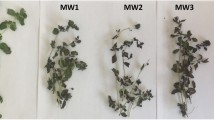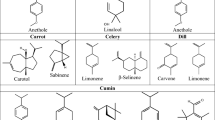Abstract
Coronopus didymus is a cruciferous weed which grows abundantly in the summer rainfall areas of northern New South Wales and southern Queensland. When eaten by cows, a characteristic taint is produced in the milk, cream and butter, resembling, particularly in butter, a scorched or burnt flavour. This taint is intensified by heat treatment of the cream and is responsible for considerable economic loss. The taint cannot be controlled by removal of the cows from the affected areas a few hours before milking, or by modern methods of cream processing in the factory.
This is a preview of subscription content, access via your institution
Access options
Similar content being viewed by others
References
McDowall, F. H., Morton, I. D., and McDowell, A. K. R., N.Z. J. Sci. Tech., 28, A, 305 (1947).
Author information
Authors and Affiliations
Rights and permissions
About this article
Cite this article
FORSS, D. Relation of the Essential Oils of Coronopus didymus to the Tainting of Butter. Nature 167, 733–734 (1951). https://doi.org/10.1038/167733b0
Issue Date:
DOI: https://doi.org/10.1038/167733b0
Comments
By submitting a comment you agree to abide by our Terms and Community Guidelines. If you find something abusive or that does not comply with our terms or guidelines please flag it as inappropriate.



